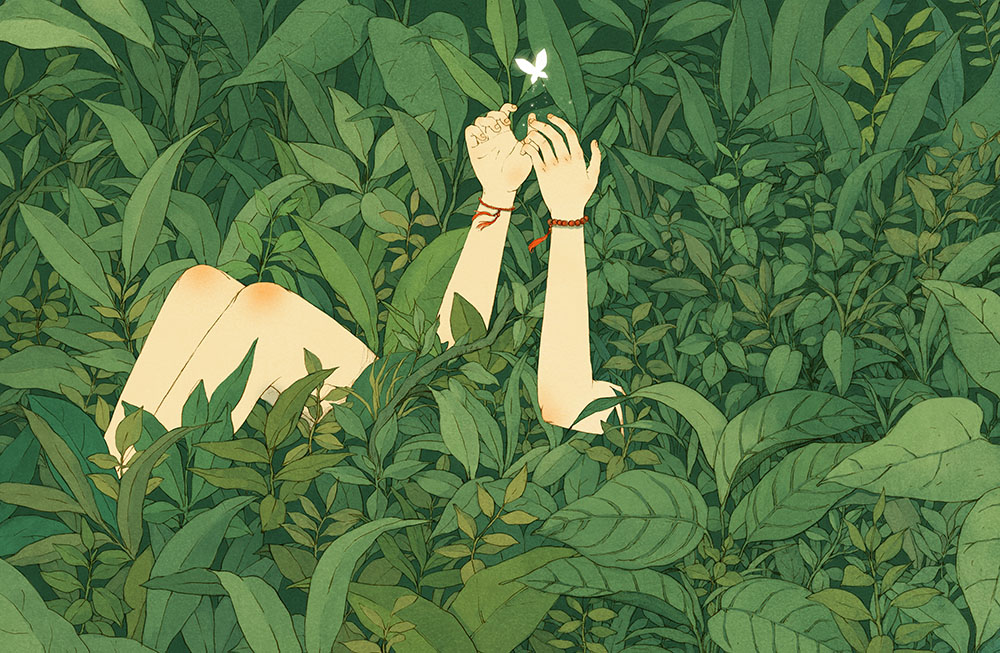There is no question that the relationship between humans and nature presents a withstanding duality. While nature’s elements , such as agents of disease and natural disasters, are the cause of many ailments and fatalities, humans are dependent upon physiological exchange with nature for food, clean water, air, and a myriad of other health benefits.
While beliefs and shared experiences around the holistic benefits of contact with nature have held true for much of human history, qualitative and quantitative research on this relationship has only just begun to gain momentum in the past twenty years. Reduction in human-to-nature contact because of factors like poor urban planning, exploitation of resources, and resulting lifestyle changes is one shift that has made way for increased scientific exploration of the relationship between humans and nature (Hartig, Mitchell, Vries, & Frumkin, 2014). Likewise, the rise of the biopsychosocial model for informing the clinical community’s understanding of health has made way for studies that examine the nature-human relationship beyond “absence of illness” frameworks to include factors like subjective well being (SWB) and self actualization (Song, 2017; Hartig et al., 2014).
The body of research on the relationship between human contact with nature and mental health ranges across varying types of nature contact, including physical access to green space, “blue space” (aquatic environments), urban and rural gardens, indoor plant presence, window views of nature elements, virtual reality (VR) experiences, and even photographs (Song, 2017; Hartig et al., 2014). Many of the findings across these contexts provide evidence to support psycho-evolutionary theory, which hypothesizes contact with nature supports the function of the parasympathetic nervous system by reducing physiological activation (Hartig et al., 2014).
For instance, one study demonstrated that subjects recovered from stress-inducing situations quickly and more completely when they were exposed to audio-visual media depicting natural settings than when they were exposed to media showing urban settings (Ulrich, et al., 1991). The physiological responses to nature contact that were recorded in this study show clearly the effects on nervous system-regulation. Similarly, Farrow and Washburn (2019) studied parasympathetic activation in the context of a Japanese therapeutic practice called “shirin-yoku,” or forest bathing. The practice consists of mindful interactions with the forest environment that engage sight, smell, hearing, touch and even taste. Building on previous research supporting that shirin-yoku can reduce anxiety, stress, and symptoms of depression, this 2019 study found increases in lnHF, a chemical associated with lowering anxiety and parasympathetic activation, as well as reduced cortisol and blood pressure levels in participants of the study (Farrow & Washburn, 2019).
In addition to the physiological evidence of nature’s effects on mental health, research on human-nature contact supports improved states of psychological well-being through self-report measures and improved cognitive function(Bratman, et al., 2019). For instance, one 2017 German study found a positive association between neighborhoods with salient green spaces and social satisfaction, perceived safety, and strong relationship networks (Orban, Sutcliffe, Dragano, Jöckel, & Moebus, 2017). Likewise, findings from a 2015 study on the effects of nature walks on affect and cognition illustrated decreases in anxiety, negative affect, and rumination (Bratman, Daily, Levy, & Gross, 2015).
It is true that humans have always been navigating the push and pull of environmental relations, and we will stay in the process of navigating for as long as we are walking around as a species. One perspective is that, by virtue of living in an industrialized, Capitalist nation, we are subject to societal frameworks that are largely divorced from collective attention on the implications of human relationship with the natural environment. Through the lens of COVID-19, however, society at large sits in a unique collective space that is unified around consideration for human-to-nature relations.
Although the the orientation to COVID-19 is saturated in collective anxiety as people face the realities of mortality, sickness, and unstable economic structures, this time of collective focused attention offers the opportunity for a shift in how we, as a society, define and maintain our systems that sustain life. In part, this could mean a societal reorientation around natural environments, perhaps through a deeper respect of our nuanced interdependence and participation in nature exploring how we can best support the natural environment as a pillar to individual and community holistic health.
Click here to create a TPN.Health clinical profile and begin building your trusted referral network in a digital space!
References:
Bratman, G. N., Anderson, C. B., Berman, M. G., Cochran, B., de Vries, S., Flanders, J., … Daily, G. (2019). Nature and mental health: An ecosystem service perspective. Science Advances. doi: DOI: 10.1126/sciadv.aax0903
Bratman, G. N., Daily, G. C., Levy, B. J., & Gross, J. J. (2015). The benefits of nature experience: Improved affect and cognition. Landscape and Urban Planning, 138, 41–50. doi: 10.1016/j.landurbplan.2015.02.005
Farrow, M. R., & Washburn, K. (2019). A Review of Field Experiments on the Effect of Forest Bathing on Anxiety and Heart Rate Variability. Global Advances in Health and Medicine, 8, 216495611984865. doi: 10.1177/2164956119848654
Hartig, T., Mitchell, R., Vries, S. D., & Frumkin, H. (2014). Nature and Health. Annual Review of Public Health, 35(1), 207–228. doi: 10.1146/annurev-publhealth-032013-182443
Orban, E., Sutcliffe, R., Dragano, N., Jöckel, K.-H., & Moebus, S. (2017). Residential Surrounding Greenness, Self-Rated Health and Interrelations with Aspects of Neighborhood Environment and Social Relations. Journal of Urban Health, 94(2), 158–169. doi: 10.1007/s11524-016-0112-3
Song, Y. (2017). A cross-state comparison of measures of subjective wellbeing. International Journal of Wellbeing, 7(1), 65–83. doi: 10.5502/ijw.v7i1.561Ulrich, R. S., Simons, R. F., Losito, B. D., Fiorito, E., Miles, M. A., & Zelson, M. (1991). Stress recovery during exposure to natural and urban environments. Journal of Environmental Psychology, 11(3), 201–230. doi: 10.1016/s0272-4944(05)80184-7
Image Credit: https://tranquilmonkey.com/artist-depicts-eternal-connection-humans-nature-wonderful-soft-dreamy-illustrations/
